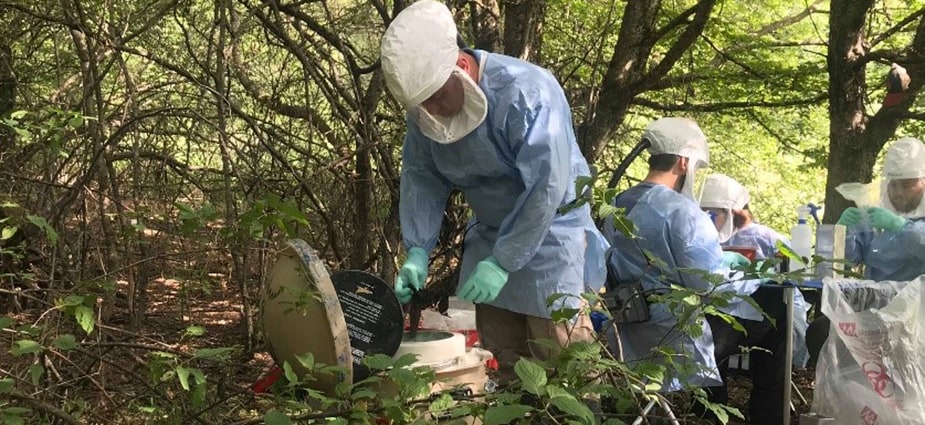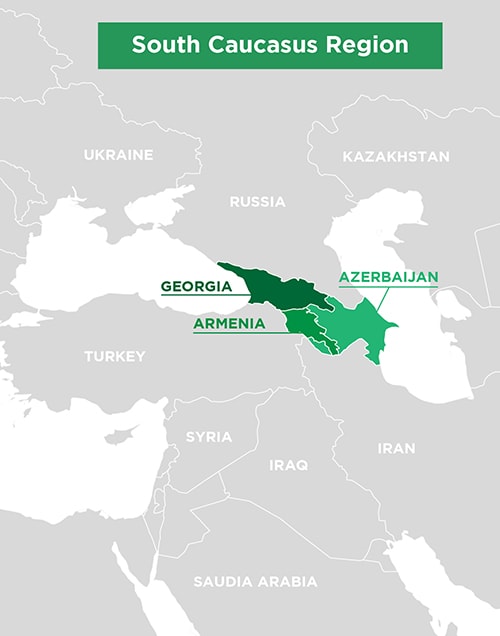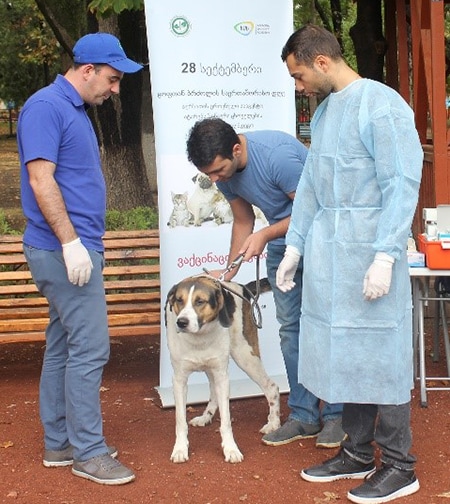Georgia: A Neutral Hub Brings Disease Detectives Together
April 30, 2019

Orthopox field team processing small mammal samples in Akhmeta municipality, Georgia. Photo: Giorgi Maghlakelidze
Tucked away in the Caucasus Mountains, the country of Georgia has a rich history of trials and triumphs.
Georgia, together with neighbors Armenia and Azerbaijan, make up the South Caucasus (SC) region. Despite the challenges of rebuilding after the fall of the Soviet Union and an ongoing conflict between Armenia and Azerbaijan, Georgia has persevered and has become a model country for public health and global health security.
A KEY HEALTH DIPLOMACY TOOL

CDC’s work in the SC demonstrates the true power of regional and international collaboration, commitment to science, and shared motivation to help others. These have always been core principles for the SC CDC regional office in Georgia, founded in 2009 to bring the Field Epidemiology and Laboratory Training Program (FELTP) to the area. Following the end of the Soviet Union, FELTP was the first program to bring together public health specialists and clinicians from Georgia, Armenia, Azerbaijan, and Ukraine.
The aim of the two-year FELTP was to strengthen capacity in human and animal disease surveillance, laboratory, outbreak response, and program evaluation through on-the-ground fieldwork, supplemented by inclass training. CDC’s SC FELTP has served as a key health diplomacy tool, strengthening the network of public health professionals across the region as they train together for two years and work cooperatively to enhance health security.
Since 2009, the program has produced 127 graduates from the region; importantly, more than half (53%) of all graduates are from outside of Georgia.
FLAGSHIP OF HEALTH DIPLOMACY IN THE REGION

Georgia FELTP aims to strengthen capacity in human and animal disease surveillance in the South Caucasus region. Photo: Tea Shvelidze
Through SC FELTP, Georgian graduates are working in various sectors in the country, including the Georgian National Center for Disease Control and Public Health (NCDC), the Richard G. Lugar Center for Public Health Research (national reference laboratory), the Ministry of Agriculture, private hospitals, and more. What has been a consistent theme in their experiences is how often the work they do is interdisciplinary, international, and most importantly, collaborative. All graduates are quick to relay not only how important CDC and SC FELTP was to their public health career, but also how important their training has been as a tool for health diplomacy in the region.
With the recent discovery of a novel orthopox virus in Georgia in 2013 and regional outbreaks of measles, rabies, Crimean-Congo hemorrhagic fever (CCHF), and Shigella, working across borders is more important than ever. The Lugar Center and the Azerbaijan Ministry of Health have developed a rewarding partnership, including the first genotypic analysis of human anthrax strains which detected that Georgian and Azeri strains share a similar heritage. This collaboration is a clear example of SC FELTP, with support of CDC Atlanta experts and SC public health agencies, developing sustainable public health capacity on a regional level and forging regional cooperation on common public health issues. This unique program demonstrates the value of regional collaboration in consistently building public health capacity, especially in times of rising global health threats.